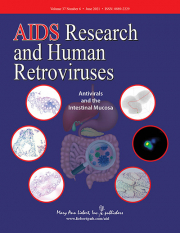Posted on June 28, 2021
Source: AIDS Res Hum Retroviruses

"Weight and Body Mass Index Change After Switching to Integrase Inhibitors or Tenofovir Alafenamide Among Women Living with HIV"
Summary:"In women living with HIV who were not obese, switching to modern antiretroviral medicines including integrase inhibitors and tenofovir alafenamide was associated with significant gains in body weight and body mass index. As obesity can increase the risk of many chronic medical conditions, identifying women at highest risk of gaining weight with these lifelong medications is critical."
Abstract:
"Weight and body mass index (BMI) change was assessed among women after switch to integrase inhibitors (INSTIs) and/or tenofovir alafenamide (TAF). From 2006 to 2019, 1,458 women living with HIV enrolled in the Women's Interagency HIV Study and on antiretroviral therapy (ART) with ≥1 study visit before and after switching to INSTIs and/or TAF were included. Weight and BMI were compared pre- and postswitch to INSTI (by class and type) and/or TAF using multivariable linear mixed effects models; all models were also stratified by preswitch presence or absence of obesity (BMI ≥30 vs. <30 kg/m2). Mean age preswitch was 47 ± 6 years, 64% were black, mean CD4 = 475 ± 201 cells/mm3, 56% had HIV RNA <200 copies/mL, 36% switched to TAF but not INSTI, 60% to INSTI but not TAF, and 3.5% to TAF+INSTI. Time from pre- to postswitch was 12.8 ± 11.8 months. The INSTI-only group but not TAF groups had small but significant increases in weight and BMI: mean 79.2-80.6 kg and 30.2-30.7 kg/m2, p's < .001, respectively, with congruent findings by INSTI type (p's ≤ .01). In stratified (preswitch BMI) analyses, only nonobese subgroups experienced increases in weight and BMI across all ART treatment groups (p's < .05). Significant, although small-to-medium, increases in weight and BMI occurred among nonobese women who switched to INSTIs and/or TAF over short follow-up. Given long-term health consequences of obesity particularly as a low-grade inflammatory condition, identifying women at highest risk of ART-associated weight gain is imperative."